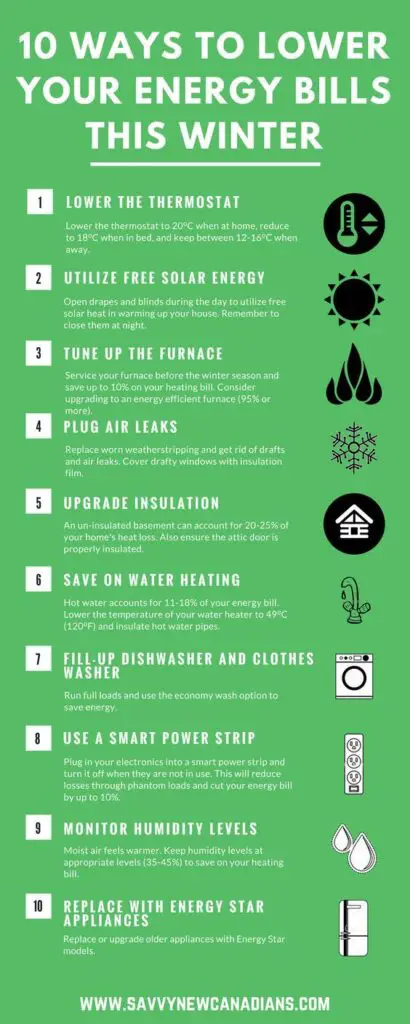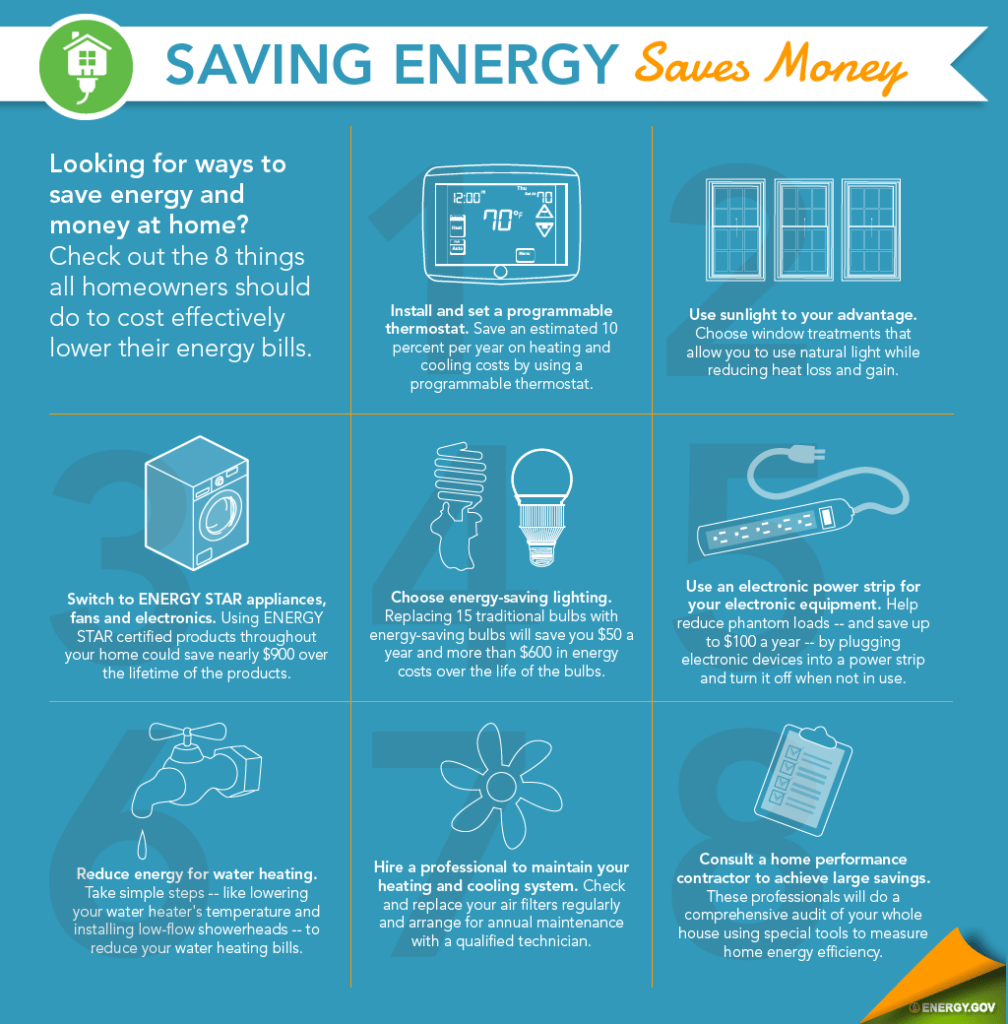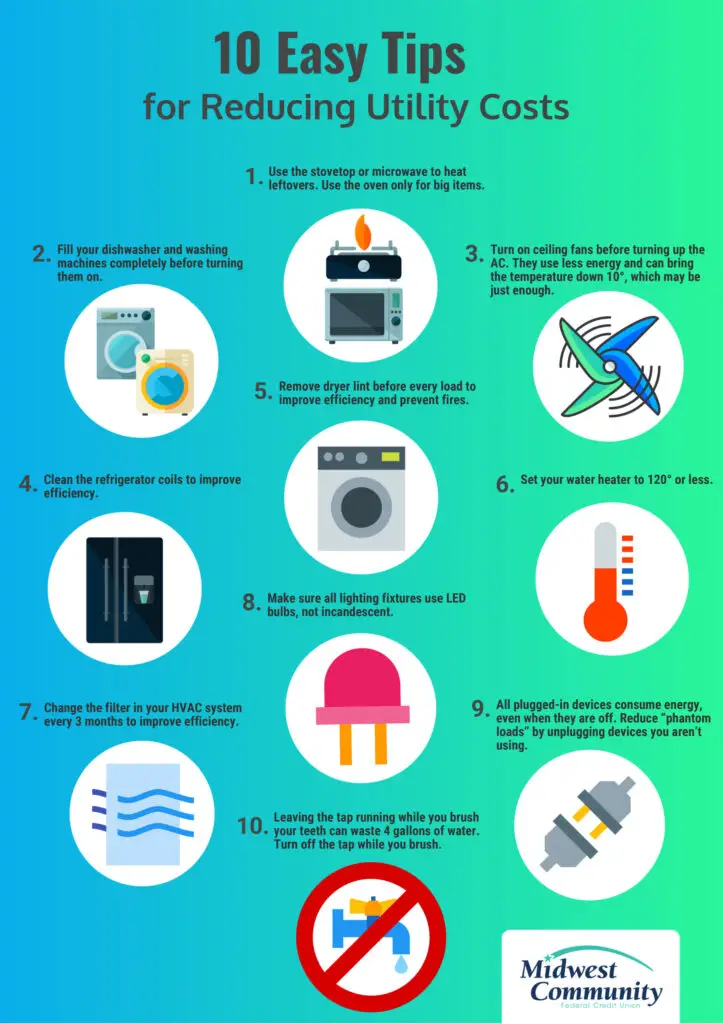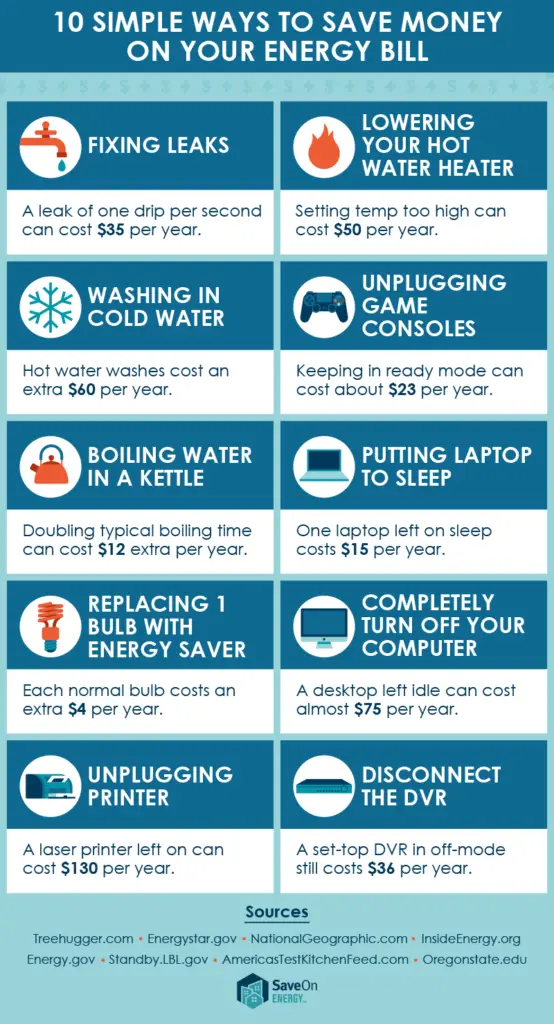Introduction
Welcome to my post on 10 tips to cut down on energy bills. In today’s world, where electricity prices are constantly on the rise, finding ways to reduce energy consumption has become more important than ever. By implementing these simple yet effective strategies, you can not only save money but also contribute to a sustainable future.
Understanding the importance of cutting down on energy bills
Reducing energy consumption is not only beneficial for your finances but also for the environment. By using less electricity, we can decrease the demand for fossil fuels, which are not only expensive but also harmful to the planet. Additionally, decreasing our energy consumption reduces greenhouse gas emissions, helping combat climate change.
The benefits of reducing energy consumption
Cutting down on energy bills has several advantages. Firstly, it directly translates to significant cost savings, allowing you to invest your hard-earned money in other essential areas of your life. Moreover, by using less electricity, you are contributing to the stability of the power grid, making it more reliable for everyone.
How a frugal lifestyle can help in achieving this goal
Living a frugal lifestyle can greatly support your efforts to reduce energy consumption. By being conscious of your energy usage and making simple changes to your daily habits, you can make a big difference. For example, turning off lights when not in use, unplugging electronics, and using energy-efficient appliances are all small changes that add up to substantial energy savings over time.
In the following sections of this post, we will explore ten practical tips to help you cut down on your energy bills. These tips range from adjusting your thermostat to optimizing natural light usage in your home. By implementing these strategies, you can achieve significant cost savings while living a more sustainable and environmentally friendly life. So let’s dive into the details and start saving energy today!

Analyzing Energy Usage
Identifying major contributors to energy bills
When it comes to cutting down on energy bills, the first step is to understand where the majority of your energy consumption is coming from. By identifying the major contributors to your energy bills, you can target specific areas for improvement and make informed decisions about how to reduce your energy usage.
Start by taking a close look at your energy bills over the past few months. Are there any noticeable patterns or spikes in energy usage? This can indicate which appliances or activities are consuming the most energy. For example, if you notice a significant increase during the summer months, it may be due to your air conditioning unit running constantly.
Assessing the impact of different appliances on energy consumption
Once you have identified the major contributors to your energy bills, it’s important to assess the impact of each appliance on your overall energy consumption. Consider the age and efficiency of each appliance, as older models tend to be less energy-efficient. It may be worth investing in energy-efficient appliances that have a lower impact on your energy bills in the long run.
Understanding energy-efficient alternatives and upgrades
To further cut down on your energy bills, consider exploring energy-efficient alternatives and upgrades. For example, replacing traditional incandescent lightbulbs with energy-efficient LED bulbs can significantly lower your energy usage. Additionally, installing insulation in your home can help regulate temperature, reducing the need for excessive heating or cooling.
By analyzing your energy usage, identifying major contributors, and understanding energy-efficient alternatives and upgrades, you can take proactive steps towards reducing your energy bills. Remember, small changes can make a big difference over time, so be mindful of your habits and make conscious choices to live a more energy-efficient and frugal lifestyle.
Energy Audit
One of the most effective ways to cut down on energy bills is by conducting a thorough energy audit of your home. This process involves identifying areas of potential energy waste and making necessary changes to maximize efficiency. With just a few simple steps, you can significantly reduce your energy consumption and save money in the long run.
Conducting a thorough energy audit of your home
To begin your energy audit, start by inspecting your home for any air leaks or drafts. Check windows, doors, and even electrical outlets for any signs of air seepage. Seal these gaps with weatherstripping or caulking to prevent heat loss during the colder months and keep cool air in during the summer.
Next, examine your insulation levels. Insufficient insulation can lead to significant energy loss. Make sure your attic and walls are properly insulated to maintain a comfortable temperature and decrease the need for excessive heating or cooling.
Identifying areas of potential energy waste
Walk through your home and take note of any appliances or electronics that are left on or plugged in when not in use. These devices continue to consume energy even in standby or idle mode. Unplug them or use power strips with built-in timers to automatically turn them off when not needed.
Additionally, consider upgrading to energy-efficient appliances. Look for the ENERGY STAR label when shopping for new devices, as they are designed to consume less energy without sacrificing performance.
Using energy monitoring tools to track consumption
Investing in energy monitoring tools can provide valuable insights into your energy usage patterns. These devices allow you to track your consumption in real-time and identify areas where energy is being wasted. By monitoring your energy usage, you can make informed decisions about reducing your consumption and ultimately saving on your energy bills.
conducting an energy audit, identifying areas of potential energy waste, and using energy monitoring tools are essential steps in cutting down on energy bills. By implementing these simple strategies, you can create a more energy-efficient home and enjoy significant savings on your monthly utility expenses.

Improving Insulation
Upgrading insulation materials for better energy efficiency
One of the most effective ways to cut down on energy bills is to improve the insulation in your home. By upgrading the insulation materials, you can enhance the energy efficiency of your house and reduce the amount of energy needed for heating and cooling.
Older homes often have insufficient insulation, which leads to significant heat loss during the winter and heat gain in the summer. By investing in better insulation materials, such as fiberglass or spray foam, you can create a barrier that prevents the transfer of heat and keeps your home comfortable throughout the year.
Sealing air leaks and draft-proofing your home
Air leaks and drafts are common culprits when it comes to energy wastage. These leaks can be found around windows, doors, electrical outlets, and other vulnerable areas in your home. To prevent energy loss, it is essential to seal these leaks and draft-proof your home.
Start by locating the air leaks using a lit candle or a thermal leak detector. Once identified, seal the gaps with weatherstripping or caulking. Door sweeps can also be installed to block drafts under doors, while foam outlet gaskets can be used to seal electrical outlets. Additionally, adding insulation to your attic and basement can further reduce energy loss through air leaks.
Insulating windows, doors, and other vulnerable areas
Windows and doors are notorious for letting cold air infiltrate during the winter and hot air during the summer. Upgrading to energy-efficient windows and doors is a long-term solution, but it may not be feasible for everyone. Instead, consider using window film or thermal curtains to insulate your windows. These inexpensive options can significantly reduce heat transfer and keep your home comfortable without breaking the bank. For doors, consider using door draft stoppers to prevent drafts from entering your living spaces.
improving insulation is a crucial step towards cutting down on energy bills. By upgrading insulation materials, sealing air leaks, and insulating windows and doors, you can create a more energy-efficient home that saves you money while providing comfort throughout the year. So why not take the necessary steps to enhance your home’s insulation and start enjoying the benefits of a frugal lifestyle?
Optimizing Heating and Cooling
Setting appropriate temperatures for different seasons
One of the most effective ways to cut down on energy bills is to optimize heating and cooling in your home. By setting appropriate temperatures for different seasons, you can ensure that your HVAC system runs efficiently without wasting excess energy.
During the colder months, it is recommended to set your thermostat to a lower temperature, such as around 68°F (20°C) during the day and even lower at night when you are tucked into bed. This small adjustment can result in significant savings on your energy bills. Likewise, during the warmer months, keeping your thermostat at a higher temperature, around 78°F (25°C), can help reduce energy consumption.
Insights into efficient use of heating and cooling systems
In addition to setting the appropriate temperatures, there are several other insights that can help you optimize your heating and cooling systems. One key tip is to ensure that your home is adequately insulated. Poor insulation allows heat to escape during the winter and enter during the summer, forcing your HVAC system to work harder and consume more energy.
Regular maintenance of your HVAC system is also crucial in order to ensure its efficiency. This includes cleaning or changing air filters on a regular basis, as dirty filters can obstruct airflow and decrease system performance. Additionally, sealing any air leaks in your home can prevent air from escaping or entering, keeping your heating and cooling system running at its best.
Investing in programmable thermostats and smart devices
Investing in programmable thermostats and smart devices can also help significantly reduce your energy bills. Programmable thermostats allow you to set different temperature schedules based on your daily routine, reducing energy consumption when you are not at home. Similarly, smart devices such as smart thermostats can learn your preferences and adjust the temperature accordingly, optimizing energy usage.
optimizing heating and cooling is a key aspect of cutting down on energy bills. By setting appropriate temperatures for different seasons, gaining insights into efficient use of heating and cooling systems, and investing in programmable thermostats and smart devices, you can significantly reduce your energy consumption and embrace a more frugal lifestyle. So why not take these simple steps today and start enjoying the benefits of a lower energy bill?

Efficient Lighting Solutions
Switching to LED or energy-saving light bulbs
One of the most effective ways to cut down on energy bills is by switching to LED or energy-saving light bulbs. LED bulbs are known for their energy efficiency, as they use up to 80% less energy compared to traditional incandescent bulbs. By replacing all the light bulbs in my home with LED ones, I have significantly reduced my energy consumption and subsequently lowered my energy bills.
Using natural light effectively
Another tip to reduce energy usage is to utilize natural light effectively. During the day, I try to rely on natural light as much as possible by keeping curtains and blinds open. This not only helps to brighten up my space but also minimizes the need for artificial lighting. By embracing natural light, I am able to reduce my reliance on electricity and ultimately save on energy costs.
Installing motion sensors and timers to avoid unnecessary lighting
To further optimize my lighting usage, I have installed motion sensors and timers throughout my home. These devices automatically turn off the lights when no one is in the room or after a set period of time, preventing unnecessary energy consumption. For example, in rooms like the hallway or bathroom that are frequently used but only for short periods, motion sensors ensure that lights are only on when needed, reducing electricity waste and cutting down on energy expenses.
By implementing these efficient lighting solutions, I have successfully reduced my energy bills while still enjoying well-lit spaces in my home. Switching to LED or energy-saving light bulbs has significantly decreased my energy consumption, while utilizing natural light effectively has further helped to minimize electricity usage. Moreover, installing motion sensors and timers has eliminated unnecessary lighting, ensuring that I only use electricity when necessary. These simple yet effective tips have not only allowed me to save money but have also contributed to a more environmentally-friendly and sustainable lifestyle.
Smart Appliance Usage
Smart appliance usage is one of the key ways to effectively cut down on energy bills without compromising on convenience and comfort. By understanding energy ratings and labels, adopting energy-efficient practices with common household appliances, and utilizing smart plugs and power-saving features, you can significantly reduce your energy consumption and save money.
Understanding Energy Ratings and Labels
When purchasing new appliances, it is important to pay attention to their energy ratings and labels. These labels provide valuable information on the appliance’s energy efficiency, helping you make informed decisions. Look for appliances with high energy star ratings, as they have been certified to consume less energy without sacrificing performance.
Tips for Energy-Efficient Usage of Common Household Appliances
To maximize energy savings, there are several tips you can follow when using common household appliances. For example, when doing laundry, wash your clothes in cold water whenever possible and avoid overloading the machine. Additionally, using the dishwasher efficiently by running full loads and allowing dishes to air dry can also help reduce energy consumption.
Utilizing Smart Plugs and Power-Saving Features
Smart plugs are a great investment for cutting down on energy bills. They allow you to control the power supply to your appliances remotely, making it easy to turn off devices that are not in use. Furthermore, many appliances nowadays come with power-saving features such as sleep modes or timers. Take advantage of these features to ensure appliances are not constantly using unnecessary energy.
By implementing these smart appliance usage practices, you can make significant strides in reducing your energy bills while still enjoying the convenience of modern appliances. So, equip yourself with knowledge on energy ratings, adopt energy-efficient habits, and invest in smart technologies to embark on a frugal and eco-friendly lifestyle.
Energy-Efficient Electronics
When it comes to cutting down on energy bills, one area that often gets overlooked is our choice of electronics and devices. However, making a few simple changes in this area can have a significant impact on reducing our energy consumption and saving money in the process. In this section, I will share some valuable tips on how to choose energy-efficient electronics, safely manage standby power consumption, and optimize settings for maximum energy savings.
Choosing energy-efficient electronics and devices
When shopping for new electronics, it’s important to consider their energy efficiency. Look for products with the Energy Star label, as these meet strict standards for energy efficiency set by the Environmental Protection Agency. Energy-efficient devices not only consume less electricity, but they also perform tasks more efficiently, resulting in lower energy bills.
Safely managing standby power consumption
Many electronic devices continue to draw power even when they are not in use, a phenomenon known as standby power consumption. To reduce this wasteful energy usage, unplug electronics when they’re not being used or utilize power strips with built-in timers or switches to completely cut off standby power. This practice not only saves energy but also helps prevent potential hazards caused by electrical malfunctions.
Optimizing settings for maximum energy savings
Taking the time to optimize your device settings can go a long way in maximizing energy savings. Adjust the brightness of your devices’ screens to a level that is comfortable for you while still conserving energy. Enable power-saving features such as sleep mode or hibernate mode, which automatically reduce energy consumption when your device is idle for a certain period. Additionally, consider setting shorter timers for screen timeouts and system sleep modes to minimize unnecessary power usage.
By choosing energy-efficient electronics, managing standby power consumption, and optimizing device settings, you can significantly reduce your energy bills without compromising the functionality or convenience of your electronic devices. Incorporating these tips into your frugal lifestyle will not only benefit your wallet but also contribute to a more sustainable and environmentally friendly future.

Changing Daily Habits
Simple practices to reduce energy consumption
When it comes to cutting down on energy bills, making a few changes to our daily habits can make a significant difference. By implementing these simple practices, we can not only reduce our carbon footprint but also save a substantial amount of money in the process.
Unplugging unused devices and chargers
One of the easiest ways to minimize energy usage is by unplugging electronic devices and chargers when they are not in use. Even when turned off, these devices still consume energy if they remain plugged into an outlet. By getting into the habit of unplugging these devices, such as laptops, gaming consoles, and phone chargers, we can instantly reduce our energy consumption.
Utilizing natural cooling and ventilation techniques
Instead of relying heavily on air conditioning during hot summer months, consider utilizing natural cooling and ventilation techniques to keep your home comfortable. Opening windows and using fans can create a refreshing cross-breeze, reducing the need for air conditioning. Additionally, closing blinds and curtains during the hottest parts of the day can prevent heat from entering your home, resulting in lower energy usage.
By implementing these two simple changes in our daily routines, we can make a significant impact on our energy bills. Not only will we be saving money, but we will also be reducing our reliance on non-renewable energy sources, benefiting both our wallets and the environment. So, be mindful of your energy consumption, unplug those unused devices, and embrace natural cooling and ventilation techniques to enjoy a frugal lifestyle that is both sustainable and cost-effective.
Remember, these are just a couple of tips that can help cut down on energy bills. Stay tuned for more practical suggestions to save on your energy expenses.

Alternative Energy Sources
Exploring renewable energy options for your home
In today’s world, finding ways to cut down on energy bills has become a top priority for many of us. As I continue to embrace a frugal lifestyle, I have discovered the importance of exploring alternative energy sources for my home. By shifting towards renewable energy options like solar, wind, and geothermal power, not only can we save money in the long run, but also contribute to a greener and more sustainable future.
Solar, wind, and geothermal energy alternatives
One of the most popular alternative energy sources is solar power. By installing solar panels on our roofs, we can harness the energy from the sun and convert it into electricity. This clean and abundant energy source not only reduces our dependency on traditional power grids but also brings down our monthly energy bills significantly.
Another option to consider is wind energy. Setting up a small wind turbine in our backyard can provide a continuous source of electricity by harnessing the power of the wind. It’s a great option for those living in windy areas and can further reduce our reliance on fossil fuels.
Geothermal energy is a lesser-known option that utilizes the heat from the Earth’s core. By installing a geothermal heat pump, we can effectively heat and cool our homes using the constant temperature beneath the ground. This cuts down on energy bills and also minimizes our carbon footprint.
Understanding the potential long-term benefits
While the initial cost of installing alternative energy sources may seem daunting, it’s essential to understand the potential long-term benefits. By investing in renewable energy, we can significantly reduce our monthly energy bills, possibly even eliminating them altogether. Additionally, we contribute to a sustainable future by reducing our reliance on non-renewable resources and lowering greenhouse gas emissions.
exploring alternative energy sources for our homes is a practical and eco-friendly way to cut down on energy bills. Whether it’s through solar, wind, or geothermal power, embracing these renewable options not only saves us money but also helps us create a greener, cleaner, and more sustainable environment for generations to come. So let’s start exploring these alternatives and take a proactive step towards a brighter future.
Financial Incentives and Grants
Researching available financial support for energy-efficient improvements
When it comes to cutting down on energy bills, exploring financial incentives and grants can significantly ease the burden on our wallets. A frugal lifestyle is not just about being mindful of our energy consumption; it also involves capitalizing on any opportunities to save money on our utility bills.
One of the first steps towards finding financial support for energy-efficient improvements is conducting thorough research. There are various organizations and agencies that provide grants and financial assistance specifically for energy conservation projects. These programs are designed to help individuals and businesses adopt eco-friendly practices and reduce their energy consumption. By investing time in researching available avenues, we can discover opportunities to receive financial support for upgrading our homes with energy-efficient appliances, insulation, or renewable energy systems.
Government programs and incentives
In addition to grants, many governments offer programs and incentives to encourage energy conservation. These initiatives can range from providing subsidized loans for installing solar panels to offering energy audits at reduced costs. By taking advantage of such programs, we not only save money on our energy bills in the long run but also contribute to the collective effort of building a more sustainable future.
Utilizing tax credits and rebates
Tax credits and rebates are another avenue worth exploring to lower our energy bills. Governments often provide tax incentives for making energy-efficient upgrades to our homes or purchasing energy-saving appliances. By applying for these credits, we can not only reduce our overall tax liability but also decrease our energy expenses over time. Additionally, utility companies and manufacturers often offer rebates for purchasing energy-efficient appliances or equipment. These rebates can lead to substantial savings, making it even more worthwhile to invest in efficient and eco-friendly alternatives.
By taking full advantage of the financial incentives and grants available, we can significantly cut down on our energy bills while making positive contributions towards a more sustainable future. So, let’s empower ourselves with knowledge and explore the various options provided by governments and organizations to support our efforts towards energy conservation.
Conclusion
The significance of taking steps to reduce energy consumption
In conclusion, adopting a frugal lifestyle and implementing smart energy management practices can significantly cut down on energy bills, thereby benefiting not only our bank accounts but also the environment. By following the ten tips outlined in this article, individuals can take charge of their energy consumption and make a positive impact on their finances and the planet.
Achieving substantial savings through smart energy management
By making small changes in our daily routines and habits, such as adjusting thermostat settings, using energy-efficient appliances, and turning off lights and electronics when not in use, we can achieve substantial savings on our energy bills. These simple steps may seem insignificant at first, but when combined, they can have a significant impact on our overall energy consumption and monthly expenses.
Creating a sustainable and cost-effective living environment
Implementing energy-saving strategies not only leads to cost savings but also promotes sustainable living. By reducing our energy consumption, we can minimize our carbon footprint and contribute to a greener and healthier planet. Additionally, many of the tips mentioned in this article also promote a more comfortable living environment, such as by insulating homes, using natural sunlight whenever possible, and incorporating energy-efficient lighting solutions.
Taking steps to cut down on energy bills is a win-win situation. Not only do we save money, but we also support environmental conservation efforts. So why not start implementing these tips today? With a little effort and awareness, we can all make a significant difference in our energy consumption and contribute to a more sustainable future. Remember, every energy-saving action counts, no matter how small it may seem!
